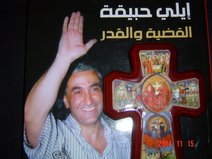

King Kong "terrorists"...
—Farish A Noor
 The introduction of more and more anti-terror laws, norms and conventions across Southeast Asia has led to the expansion of a state security apparatus that now presents itself to the public in the form of new legislation that allows for even more phone-tapping, checks on the internet, routine interrogations, detentions without trial etc
The introduction of more and more anti-terror laws, norms and conventions across Southeast Asia has led to the expansion of a state security apparatus that now presents itself to the public in the form of new legislation that allows for even more phone-tapping, checks on the internet, routine interrogations, detentions without trial etc
The political economy of the ‘war on terror’ operates on both the discursive and material levels. At both levels what we have witnessed over the past decade or so is the attempt to inflate the notion of the Muslim as a potential threat to society.
In much of what has been written about the subject of ‘Islamic terror’, we encounter the same and often-repeated themes and tropes: Muslim terrorists are presented as being cunning, nefarious, two-faced, capable and willing to resort to whatever means necessary and to use whatever means at hand to achieve their stated political objectives.
It is this image of the all-pervasive and all-powerful Muslim terrorist that in turn feeds the discourse of the ‘war on terror’ and which provides securocrats and technocrats with both the practical and moral justification for the perpetuation of certain stereotypes about Islam and the Muslim identity.
This inflation of the powers and capabilities of Muslims in turn explains and justifies the inflation of expenditure that goes into sustaining the material economy of the discourse on the ‘war on terror’ as well. For as the perceived threat of ‘Islamic terror’ multiplies and is magnified, so are the methods used to contain the perceived threat as well.
It is therefore hardly surprising to note that accompanying the dissemination and sedimentation of the discourse of the ‘war on terror’ across Asia and Europe we have also seen the creation of an even bigger and potentially more destructive anti-terror security industry and state security apparatus.
In the Philippines, for instance, the discourse on the ‘war on terror’ has provided justification for joint military exercises between the armed forces of the Philippines and the United States, which under normal circumstances would have gone against the spirit of the post-Marcos 1986 Constitution of the country that specifically forbids any Philippine president from allowing or inviting foreign armed forces to operate in the country.
In the case of Malaysia, Singapore and Indonesia the same discourse has sustained and helped to create even more security institutions and anti-terrorism agencies, funded by local government sources as well as by foreign donors.
In Thailand, whose decades-long insurgency in the South was re-cast as a ‘terror threat’ by the government of Prime Minister Thaksin Shinawatra and subsequent leaders of the country, the ‘war on terror’ has even served as a justification for greater and grander arms-purchasing projects, including the proposal to buy jet fighters from Sweden, which would presumably be used to somehow contain the threat of Muslim terrorism in the South.
Here lies the double-edged nature of the ‘war on terror’ discourse and the manner in which it can and has been used to create a new Muslim subjectivity altogether.
Muslim terrorists (and Muslims in general) are cast as individuals with extraordinary powers and abilities to communicate, organise and orchestrate acts of wanton violence and excess. Muslims are also endowed with almost super-human powers and abilities, and this is reflected in the way in which state security agencies see the need to acquire stronger and greater weapons of mass destruction to deal with the security threat posed by Muslims. (The Thai government’s proposal to purchase jet fighters from Sweden is a case in point, as if Muslim insurgents in the South are immune to ordinary bullets and can only be killed by rockets launched from jet fighters.)
What, then, is the final image of the Muslim that we arrive to? It would seem as if in the context of the ‘war on terror’ discourse Muslims have been endowed with a superhuman subjectivity that presents them with an extraordinary degree of agency, intelligence, endurance, the capacity to mobilise themselves and of course the super-human capability to withstand attack by conventional weaponry (which necessitates the purchase and use of greater weapons of destruction).
Muslims have, in short, been re-invented as a super-human threat that can no longer be contained and defeated by conventional means alone.
It is this super-human character that is imposed on the narrative device of the ‘Muslim terrorist’ that justifies the creation, expansion and perpetuation of the military-industrial complex in so many of the countries in Asia today. Having inflated the image and power of Muslims to that of super-human beings who perhaps can even be said to be the next stage of human evolution, the very same discourse of the ‘war on terror’ aims to contain this potential threat of Muslim terrorism with the threat of even greater state violence.
This marks one of the other features of the discourse of the ‘war on terror’ and how it has expanded not only the scope, depth and magnitude of Muslim subjectivity beyond the level of the mundane and ordinary, but also the scope and magnitude of state violence and power to a level hitherto unreached.
The introduction of more and more anti-terror laws, norms and conventions across Southeast Asia has led to the expansion (both virtual and real) of a state security apparatus even bigger than the one that existed during the Cold War, and which now presents itself to the public in the form of new legislation that allows for even more phone-tapping, checks on the internet, routine interrogations, detentions without trial etc.
All of this, of course has been justified on the grounds of public safety and the desire to contain the potential of excess and violence that has been embodied in the symbolic figure of the super-human Muslim terrorist. Not even at the height of the Cold War has Asia witnessed such a neat and effective combination of discursive and material-economic interests working hand-in-glove with each other.
And not even during the Cold War was the subjectivity of the oppositional Other constructed in such magnified proportions. Even Communists could be killed by bullets, but it would appear that Muslim ‘terrorists’ can only be slain by rockets and cannons. Muslims have consequently been elevated to the status of giants and monsters, almost on par with King Kong or Godzilla.



